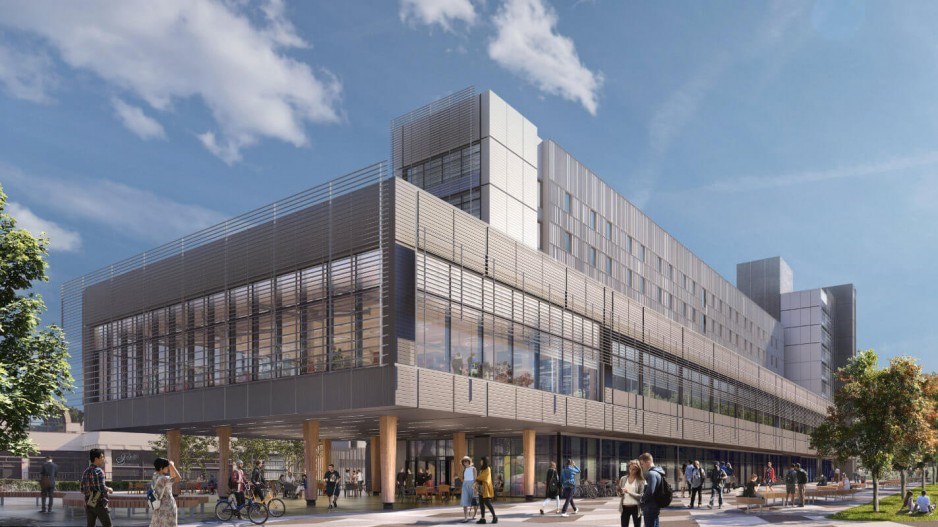NDP cabinet ministers today announced $1.2 million in funding for four new mass timber projects, including a new 783-unit student housing building for the University of Victoria.
The announcement was part of the unveiling of the government’s new mass timber action plan.
“Not only will this new … building provide affordable housing for nearly 800 students, but because it’s being built with mass timber, it will be one of the greenest and most sustainable buildings anywhere in North America,” said Ravi Kahlon, B.C.’s minister of Jobs, Economic Recovery and Innovation.
Essentially, the government’s plan uses government procurement to encourage the use of mass timber and engineered wood products in the construction of public buildings -- displacing concrete, steel and brick -- as a way of bolstering B.C.’s domestic mass timber manufacturing sector.
Mass timber includes engineered wood products like cross-laminated timber, which can be made from small dimension lumber. The action plan aims to see as many as 10 new mass-timber manufacturers in B.C. by 2035.
“Mass timber is a new, value-added, low-carbon wood product that has a potential to revolutionize the way we build here at home, but also in emerging markets around the world,” Kahlon said.
Faced with a long-term decline in the annual allowable cut in B.C., the John Horgan government has been promoting a strategy of doing more with less, emphasizing higher value-added manufacturing like engineered wood and mass timber.
"Growing B.C.'s mass timber sector is key part of our government's vision for the future of forestry - a future where we get more value from every tree harvested," said B.C. Forests Minister Katrine Conroy.
In a recent interview with BIV News, Chris Bataille, an academic at Simon Fraser University and contributor to the Intergovernmental Panel on Climate Change’s Working Group 3’s report for the Sixth Assessment, said that it is now expected that the use of steel in construction could be reduced by 40% in the coming decades and cement by 20% through materials substitution.
Mass timber is one substitution material that is already beginning to reduce the amount of cement and steel used in high-rise construction.
“Mass timber can match or exceed the structural performance of concrete and steel while reducing carbon emissions by up to 45%,” Kahlon said. “Compared to milling for lumber, mass timber can deliver up to seven times the economic value for our forest products.”
Kahlon said the new mass timber plan will be showcased at an international conference in Portland, Oregon.
“I will be taking with us our mass timber action plan, which we are releasing today, to show the world what we are doing to support and grow this important industry,” Kahlon said.




